Contact Us | Call: 01420 481573 | Email: info@mesh-energy.com
Overheating & Ventilation Analysis
Overheating & Ventilation Analysis
Thanks to improvements in thermal efficiency and airtightness, overheating has become a significant challenge in modern building design. Part O Building Regulations came into force in 2022, meaning it is now a legal requirement for all new residential buildings to meet certain standards to pass the planning stage.
However, when considered in the early design stages, it is possible to reduce the risk of overheating without greatly impacting your overall budget or design. At Mesh, we work in collaboration with architects to develop practical and cost-effective solutions to guard against overheating.

Key benefits of a Mesh overheating analysis:
01
Increase your chances of planning approval.
We are experts in meeting Part O regulations. By working with Mesh from the early design stages you’ll reduce the risk of planning failure and the need for costly design changes.
02
Create a resilient building fit for a changing climate.
As average temperatures rise, the problem of overheating will intensify. We map your project against long-term climate predictions to ensure a future-proofed build.
03
Ensure wellbeing with thermal comfort.
Overheating can cause discomfort and decreased productivity, as well as lead to health problems particularly for vulnerable occupants. Building sustainably means building with occupants in mind.
01
Increase your chances of planning approval.
We are experts in meeting Part O regulations. By working with Mesh from the early design stages you’ll reduce the risk of planning failure and the need for costly design changes.
02
Create a resilient building fit for a changing climate.
As average temperatures rise, the problem of overheating will intensify. We map your project against long-term climate predictions to ensure a future-proofed build.
03
Ensure wellbeing with thermal comfort.
Overheating can cause discomfort and decreased productivity, as well as lead to health problems particularly for vulnerable occupants. Building sustainably means building with occupants in mind.
04
Reduce post-occupancy energy costs.
By tackling overheating at the pre-planning stage, you can integrate passive heat reduction methods that don’t rely on energy intensive and costly technologies like air conditioning.
05
Lead the way to a more sustainable future.
Adapting our buildings today will ensure we respond to our changing climate and minimise our chances of making it worse.
04
Reduce post-occupancy energy costs.
By tackling overheating at the pre-planning stage, you can integrate passive heat reduction methods that don’t rely on energy intensive and costly technologies like air conditioning.
05
Lead the way to a more sustainable future.
Adapting our buildings today will ensure we respond to our changing climate and minimise our chances of making it worse.
Our process:
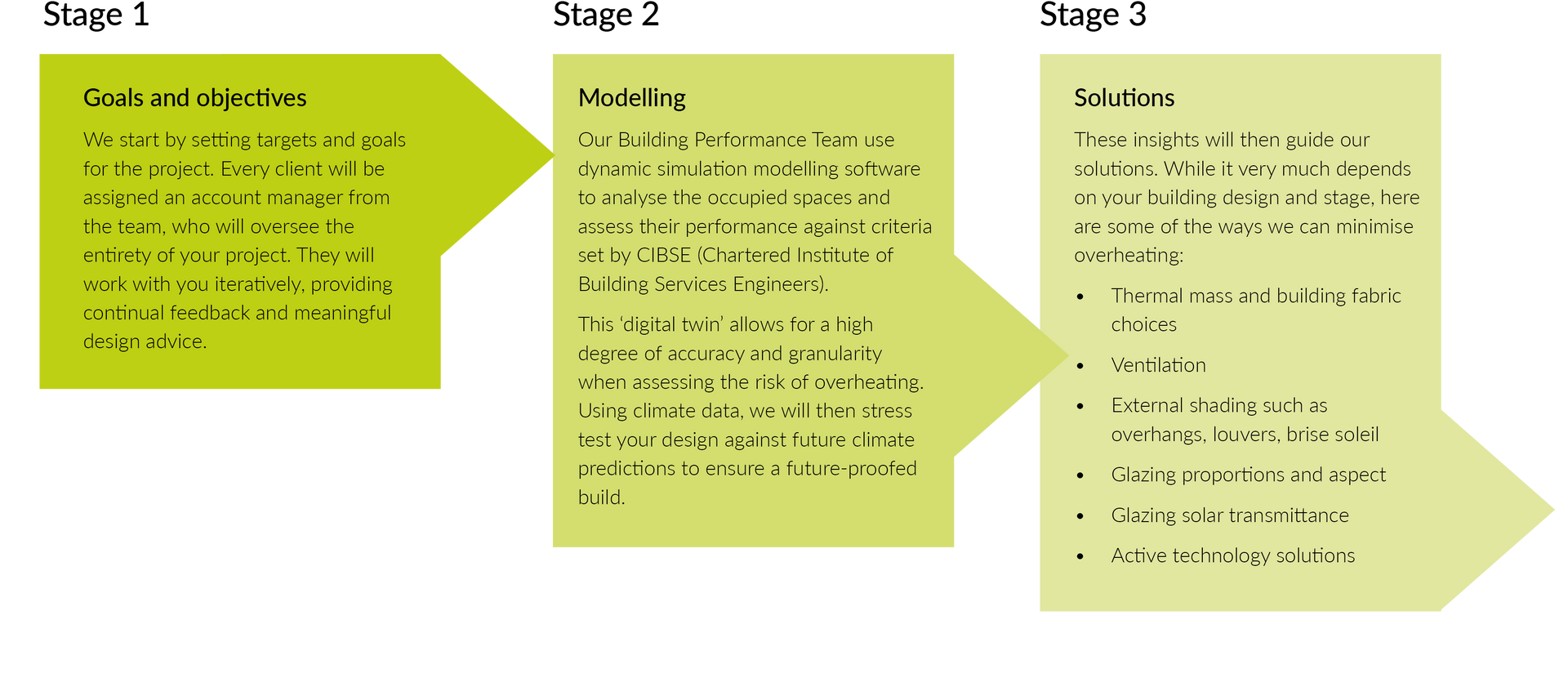
Why choose Mesh?
We cover both Part O Simplified Method and TM59 criteria and can advise on the best course of action for your project.

You will work with a single contact from our Building Performance Team who will guide you through the process, from understanding your goals and priorities to advising you on the planning process.

We work in collaboration with the architect to reduce overheating with a minimal impact on the aesthetic ambitions.

You will receive a comprehensive report, featuring high-level recommendations for improvement and detailed models demonstrating our conclusions.

Our in-house M&E team can provide technical feasibility solutions to bring theory to life.
Our proof:
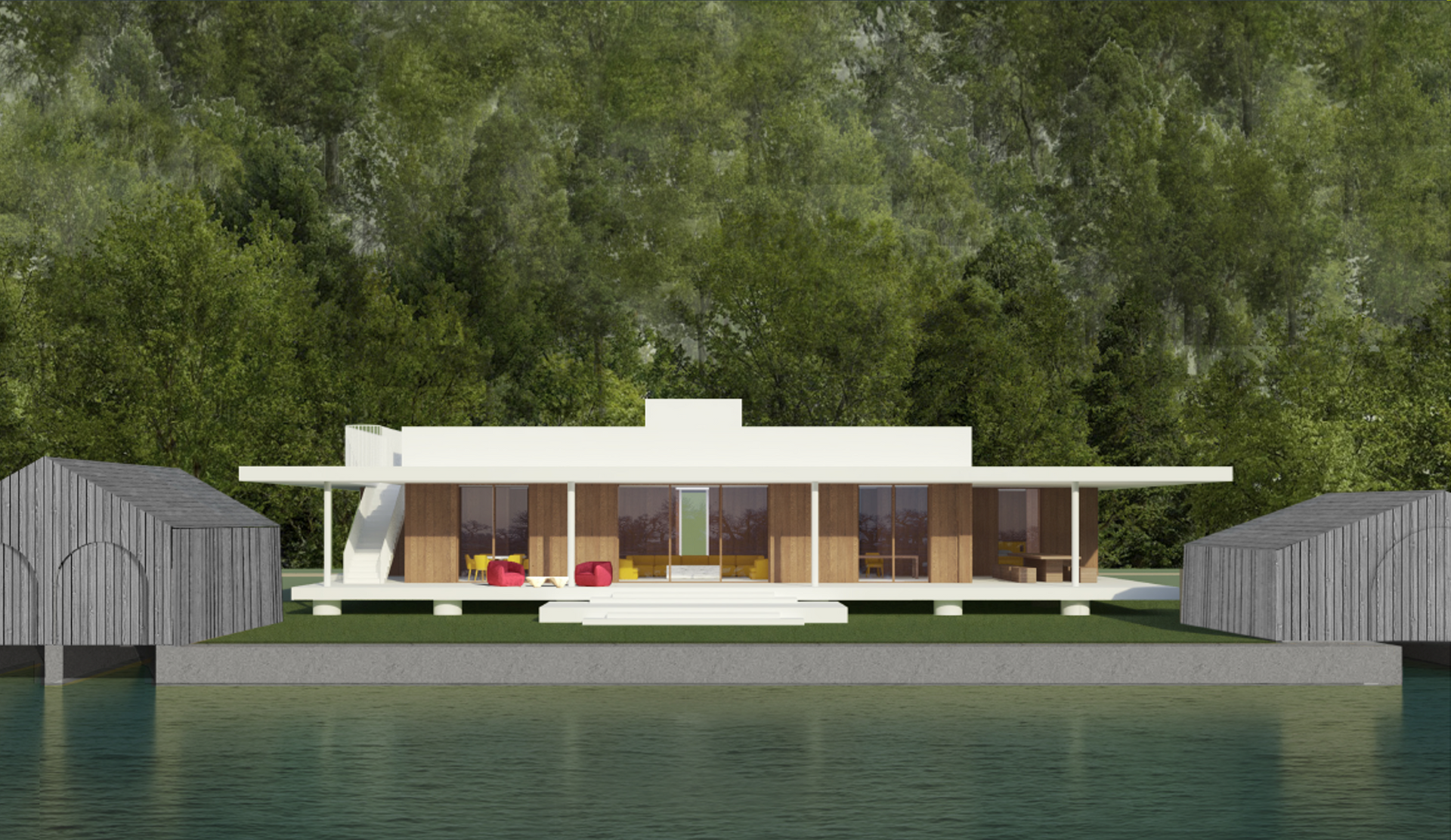
Creating a wind chimney
Dynamic simulation modelling | Ventilation system + additional openings
This modern home included large overhangs to create shading and plenty of openings, yet many of the rooms were failing overheating tests. The need for security meant the large sliding doors could not be considered as a viable solution for overnight cooling.
Instead, we recommended installing additional windows above the doors that could be left open, and repurposing of the existing chimney design into a natural ventilation system, that drew warm air out through the roof.
These changes allowed for minimal impact on the budget and aesthetic vision, while allowing the building to successfully meet Part O criteria.
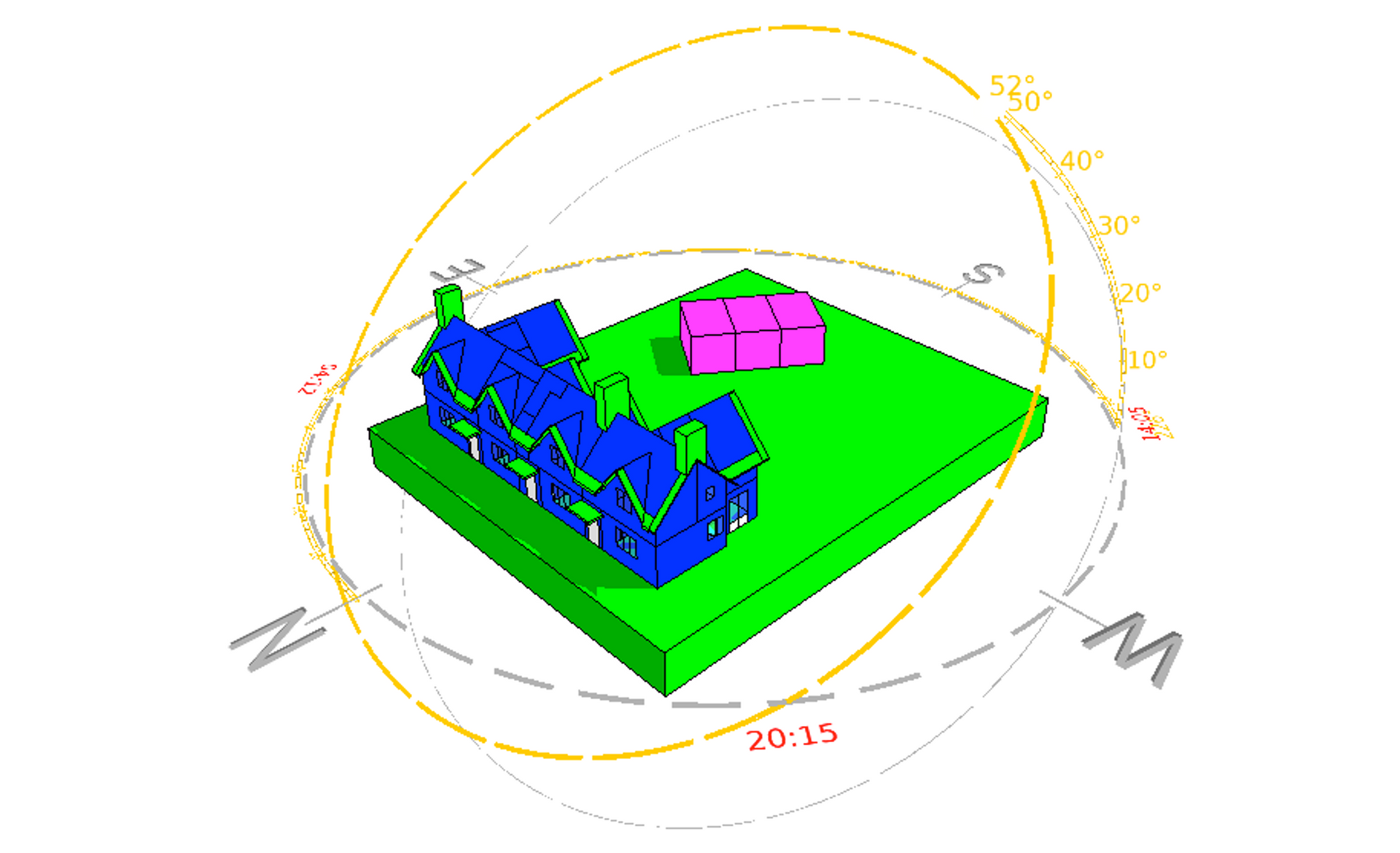
A cottage in a conservation area
Dynamic simulation modelling | Additional openings
This traditional style new development was planned for a conservation area, this meant we were limited as to what we could change on the outside of the building.
Several of the bedrooms were failing the overheating criteria because they were unable to release heat at night.
The master bedroom, which had a double aspect, was passing, so we chose to use this as inspiration and recommended installing additional openings to existing windows to encourage cross ventilation. Overheating in the corridors was solved by the additon of tiny extra sky-lights on hidden on the roof apex.
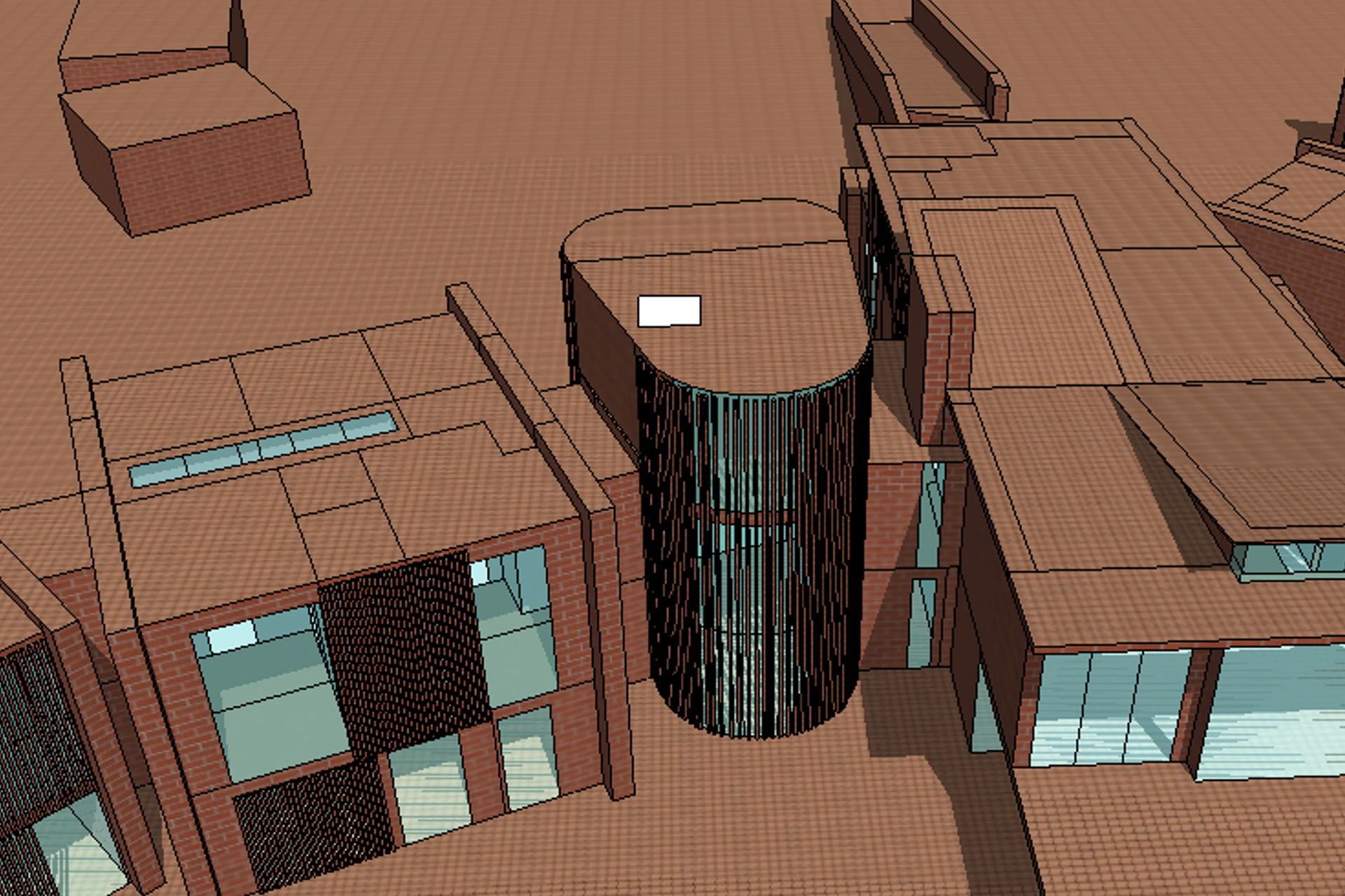
A Passivhaus in need of shade
Dynamic simulation modelling | Additional openings
This home had been designed to passivhaus standards, which meant we faced restrictive options for adaptation. Despite the use of brise soleil and louvres, the amount of glazing was causing several of the rooms to fail.
The building was surrounded by natural shade, but the trees could not be taken into consideration for Part O criteria as they're not considered to offer long term viability.
The solution was to include an opaque sky-light on the roof of the central part of the building. This sky-light offered enough ventilation to encourage warm air to move through the building, and the opaque glazing mitigated additional solar glare.
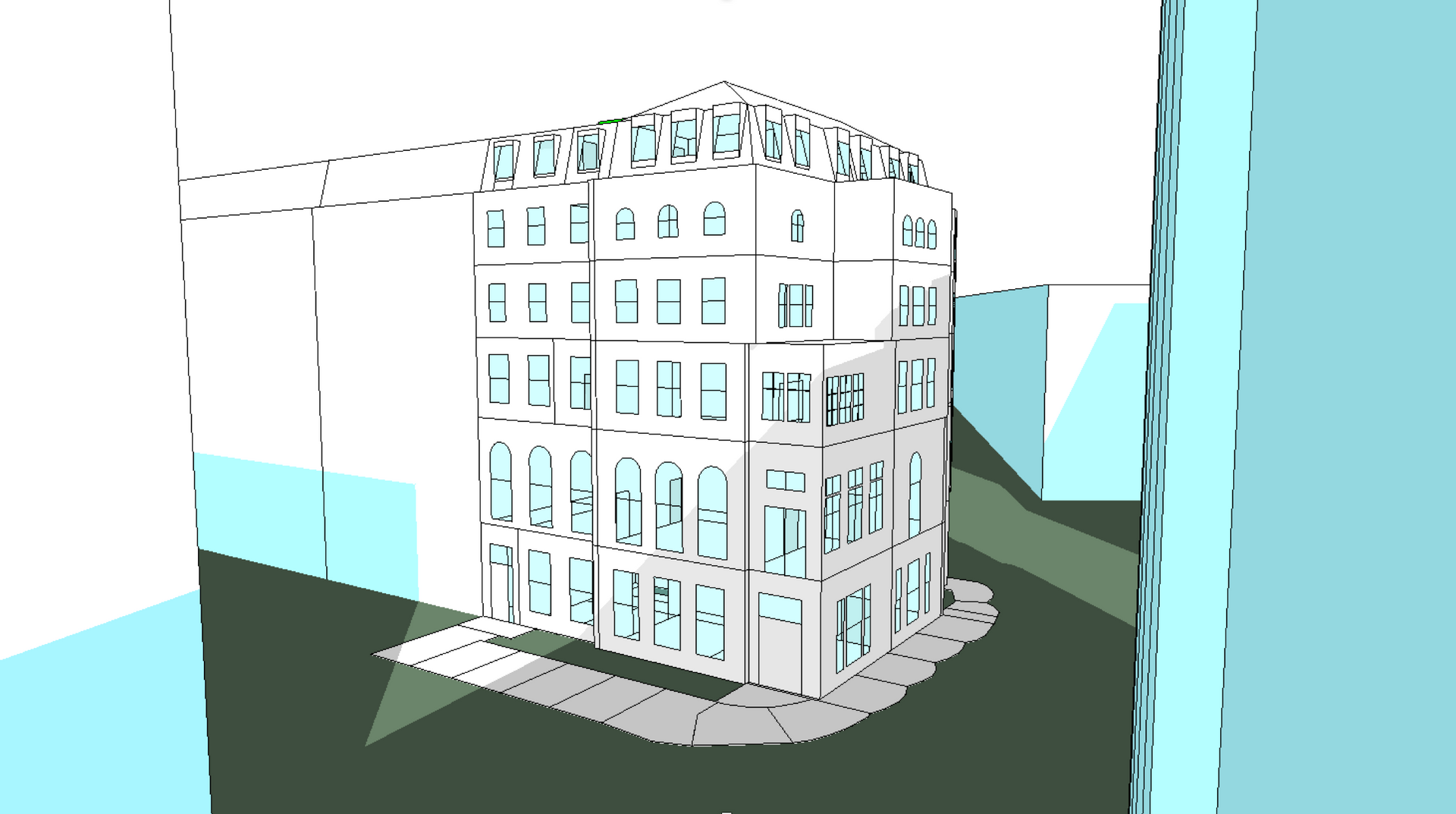
A listed retrofit in London
Dynamic simulation modelling | Configuration recommendations
We are asked to provide an overheating analysis for this major refurbishment project in central London. Currently, retrofits are not required to meet Part O criteria, and with listed heritage properties it can be incredibly difficult to meet them.
However, through dynamic thermal modelling, we could show which specific rooms were more vulnerable to overheating. This helped the developer to target the use of air conditioning and plan the configuration of rooms to suit daily thermal fluctuations.
This case study illustrates how even where overheating regulations aren't a legal requirement, taking them into consideration can improve both post-occupancy experience and the sustainability credentials of a build.
Find out how our overheating analysis can improve your project's success.
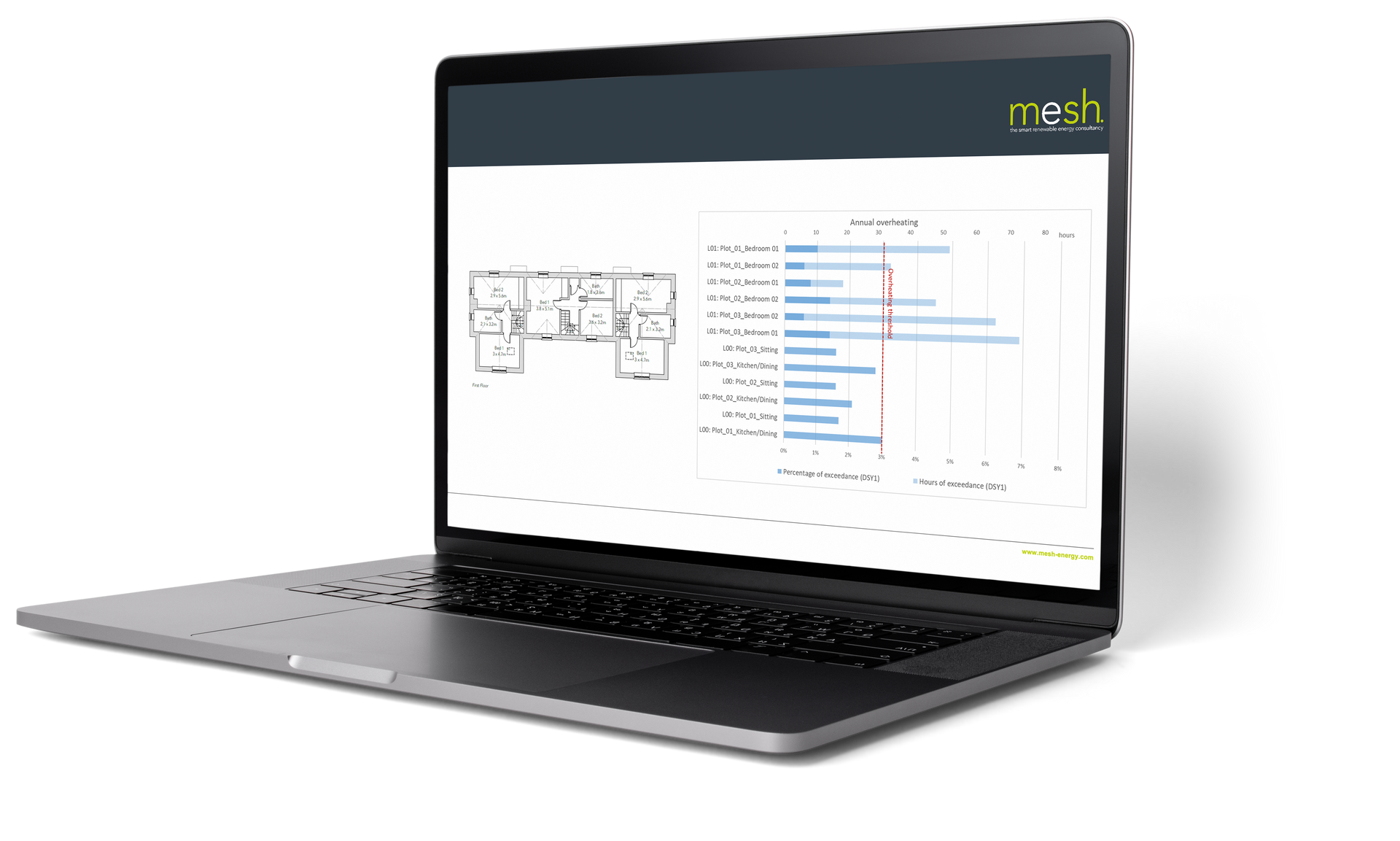
What causes overheating?
Overheating is where the room temperature of a building rises and becomes uncomfortable or even unhealthy for its occupants.
Increased use of glazing and reliance on heat generating technologies like hot water, appliances, and of course air-conditioning all exacerbate overheating, and because modern building methods provide for greater thermal efficiency and airtightness there is nowhere for the hot air to escape from.
You can find out more about overheating and why it's vital to consider early on in the design process in our insights below.
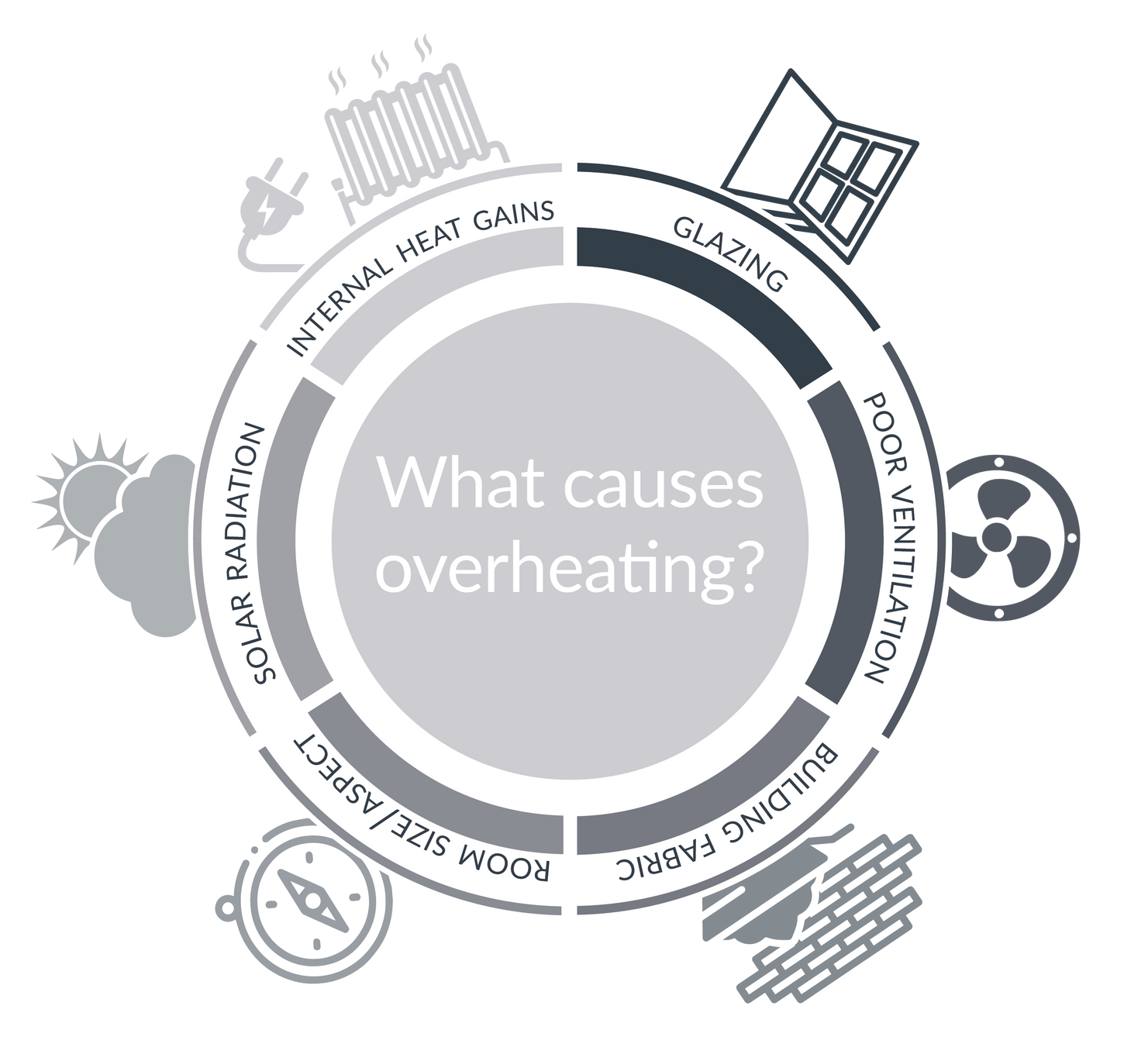
Further Insights
FREE Downloads
We have three FREE resources available to download to help with your next project.
- Mesh Energy's guide to overheating and Part O regulations
- Mesh Energy's considerations and solutions guide
- Part O Calculator - explore the data associated with your project
Thank you for submitting.
We hope you find the resources valuable.
Please try again later.
By completing the form we will add you to Memo, our monthly newsletter. It's full of valuable and insightful articles, resources and information regarding the built environment and renewable energy. You can unsubscribe at anytime.
RIGHT FIRST TIME BOOK
Order your copy today
DOWNLOAD THE HEAT PUMP HERO APP
Calculate your savings and source accredited installers today
Address: Cambridge House, 8 East Street, Farnham, England, GU9 7RX |
Tel: 01420 481573 |
Email: info@mesh-energy.com
Company No. 09524252 •
Privacy Policy














